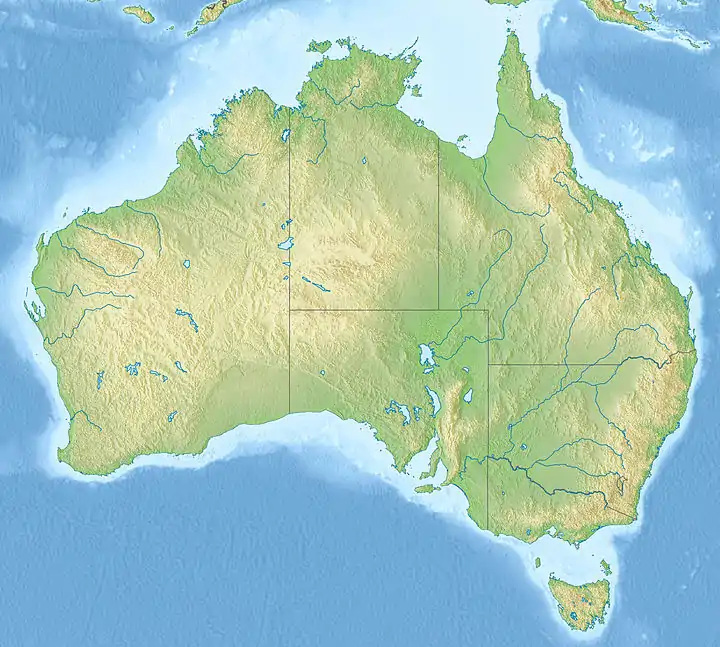| Organization | University of Tasmania | ||
|---|---|---|---|
| Location | Mount Canopus near Hobart, Tasmania, Australia | ||
| Coordinates | 42°50′51″S 147°25′58″E / 42.84750°S 147.43278°E | ||
| Altitude | 260 m (850 ft) | ||
| Established | 1970s | ||
| Telescopes | |||
| |||
 Location of Canopus Hill Observatory | |||
The Canopus Hill Observatory, located approximately 12 km from Hobart in Tasmania, Australia, is an optical astronomy observatory belonging to the University of Tasmania (UTAS).[1] Due to the high southern latitude, the Canopus Hill Observatory is able to observe and study the Magellanic Clouds.[2] However, the observatory has closed down due to the "encroaching light pollution from the Hobart suburbs".[3] According to the Astronomical Society, light pollution reduces the vision of the night sky, becoming a "major menace to amateur and professional astronomers alike".[4]
Telescope
The Canopus Hill Observatory has a variety of telescope instrumentation, including a 2-channel high speed photometer with UBVR, clear filters, a CCD photometer with SITe 512x512 pixel illuminated backside-thinned CCD and quick change 6-channel filter wheel.[5] According to the UTAS, these telescope instrumentations are attached at the f/11 Cassegrain focus. There is also a 16" telescope that is used for observatory open nights for public viewing, photographic work and the Astronomical Society of Tasmania.[6]
See also
References
- ↑ "Mount Canopus Observatory". www.phys.utas.edu.au. Retrieved 31 August 2018.
- ↑ "Mount Canopus Observatory". www.phys.utas.edu.au. Retrieved 31 August 2018.
- ↑ shecanip (16 April 2012). "Mt Canopus Observatory - Mathematics & Physics". www.utas.edu.au. Retrieved 31 August 2018.
- ↑ "Light Pollution | The Astronomical Society". www.asnsw.com. Retrieved 31 August 2018.
- ↑ shecanip (16 April 2012). "Mt Canopus Observatory - Mathematics & Physics". www.utas.edu.au. Retrieved 31 August 2018.
- ↑ "Mount Canopus Observatory". www.phys.utas.edu.au. Retrieved 31 August 2018.